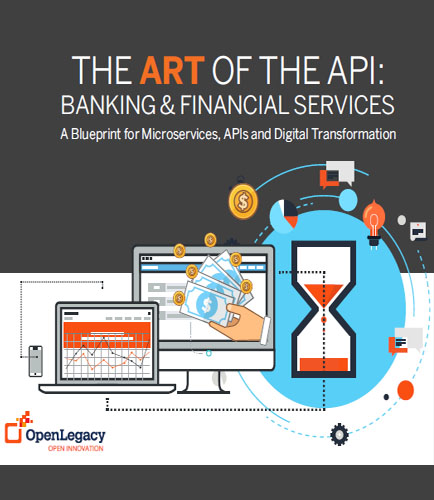
PROCESSING. PLEASE WAIT...

White Paper: OpenLegacy
The open API technology has potential to unleash a new wave of changes in the financial service industry. The implementation of APIs and microservices can eliminate complex integration difficulties thereby extending your back-end legacy systems to create a fully functional digital service. With OpenLegacy--open-standards-based API integration and management software--you can create seamless customer experiences, drive new revenue and reduce customer churn with innovative digital applications through the web or mobile devices within days or weeks.
Customers expect real-time information whenever and wherever they are, without the assistance of an agent or a call center representative. The modern agent requires new tools and applications to maintain productivity in a mobile environment. This whitepaper explores the topic of using APIs (application programming interface) to quickly deliver the innovations that banking customers demand.
In this whitepaper learn how to implement the ART of the API in order to achieve:
Seamless customer experience
70% reduction in total cost of ownership
Fully functional digital services in minutes instead of months
Software quality and security
Drive new revenue

By: TEKchand
To be best in class, an effective ATM remote management system has to clear various significant hurdles. While there are many ATM remote management solutions, very less offer the completeness, robust applications, ease of use, ATM-centric expertise and affordability of CO-OP ATM Visual Control. ATMs have always remained a significant piece of a credit union’s functionality, and play an essential role in offering convenience to members. This whitepaper highlights the importance of moving to true ATM Remote Management, ATM as a valuable asset to the credit union branch model and also explains the efficient management of the ATM fleet as a necessary duty. It discusses: Concept of CO-OP ATM Visual Control Three critical applications delivered by CO-OP ATM Visual Control Features and functionality for credit unions delivered by Remote Manager
By: Duco
One of the main criticisms of the original MiFID was that national regulators did not enforce the directive with the same zeal across Europe. The list of financial instruments covered has been extended to almost all instruments traded in European markets – with particular emphasis on the OTC derivatives market that was previously out of scope for MiFID I. The issue with making this distinction across so many different instruments is one of the main reasons why the MiFID II and MiFIR implementation date has been delayed twice from its original start date of January 2015. While regulators have not specifically outlawed the use of spreadsheets and UDAs, it is commonly accepted that under MiFID II, organizations need a much more robust and scalable approach to data control. What are the data problems that MiFIR transaction reporting requirements are likely to cause? What is the impact of the new regulations on firms? What is the cost of non-compliance? Move ahead and read the following whitepaper that will address all your questions, including these: How to identify traders or algorithms involved in the decision and execution process of a transaction? Which general fields will require extra reconciliation steps? What are the number of data fields required on transaction reports and the reporting requirements? How to trade instruments on an approved venue? Which legacy systems can be replaced and which ones are difficult to scale?


 2025 All Rights Reserved | by: www.ciowhitepapersreview.com
2025 All Rights Reserved | by: www.ciowhitepapersreview.com